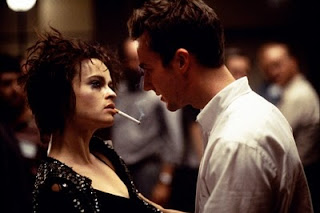No matter how little you care about it, fashion has a way of digging into the subconscious of many. It often reflects the current economy, the current mindset of the people. Or perhaps it is fashion that determines such things and not the other way around?
The term fashion stems from the old anglo-french term faceon which literally means to shape or manner. Fashion is a method of construction (I read once that it was described as a different form of architecture, one for the body.) and a method of influence.
While it may be beautiful, it is not meant to last.
It is adaptable, ever changing-as susceptible to the environment that surrounds it as mercury or water.
So it is not surprising that fashion would have the ability to reflect the current economy.
For example, in 3000 B.C. Egyptian society was known for it's fine linen. The soil surrounding the Nile allowed for the production of flax seed, which created a mass production of linen. Due to this massive production, the Egyptians were allotted to indulge in other forms of decoration that were not as practical as linen (which was mainly an item of comfort and coverage, it was fine enough to prevent from over-heating in the Egyptian sun). Children often wore no clothing until puberty, but they were still adorned with make-up and jewels.
The lower classes, such as the slaves, were often naked. Clothing revealed the economic standing of the wearer. It is a concept that is still practiced today.
Once society reached a certain level of stability or wealth it became normal to indulge in clothing for decorative purposes, rather than simple comfort.
While fashion still reflects the economic standing of the wearer, it is no longer akin to the caste system of Ancient societies.
In the 1920's, after the first world war, fashion hit a major turning point. With the war behind them and the occurrence women's suffrage movement, society became more inventive and relaxed. It was the same in the 1700's after the thirty year's war, when even men wore flamboyantly effeminate styles after years of military inspired fashion.
Women became a part of the economy in the 1920's. The victorian fashions of the decades previous would no longer be efficient in this new world. While Victorian fashions emphasized opulence and "largeness", 1920s fashions stressed slenderness, mobility, and grace.
Fashion had been stripped to its core at the urging of a receptive consumer.
Suddenly there were dropped waists and raised hemlines. Flappers came to embody the spirit of the time, which was one of luxury. Even the lower class consumers now had the ability to "look their best". There was always the possibility due to the industrial revolution and the freedom that American capitalism represented to move up the social ladder. It was no longer impossible to be whoever you wanted to be.
Even Hollywood and cinema was introduced during this time, and with it the influence of media on fashion. The economy produced the ability to invest in imaginative fields, to take a chance.
Women were no longer expected to rely on a man, or even to be modest. As the writings of F. Scott Fitzgerald displayed, it was even popular for women to be sexually free.
This was contrasted deeply in the 1930s with the entrance of The Great Depression after the stock market crashed in 1929. The lighthearted, forward-looking attitude and fashions of the late 1920's lingered through most of 1930, but by the end of that year the effects of the Great Depression began to affect the public, and a more conservative approach to fashion displaced that of the 1920s. For women, skirts became longer and the waist-line was returned up to its normal position in an attempt to bring back the traditional "womanly" look. With consumer buying at an all time low, people were not willing to take as many risks in fashion.
At the same time, it is often said that fashion during times of war is strongly influenced by the military. With the entrance of the second world war women in America began to wear shoulder pads, as they were also working in factories to produce military weapons while the men fought overseas.
Women started to wear jeans, styling their clothing from men's fashion to create practicality. There was also the fall of Paris due to the war, which had been one of the major fashion capitals in the western hemisphere.













No comments:
Post a Comment